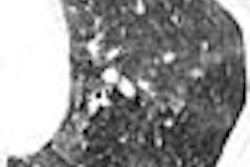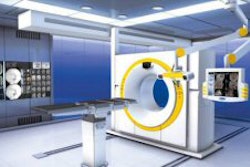NEW ORLEANS - The radiation dose from dual-source CT (DSCT) is no more than that of single-source CT, according to a presentation this week at the American College of Cardiology (ACC) meeting. However, DSCT is not an option for patients with severe arrhythmia or a heart rate less than or equal to 55 beats per minute (bpm), they stressed.
"Using DSCT for cardiovascular indications is within guidelines and comparable to single-source CT," said principal investigator Dr. Sandra Simon Halliburton of the Cleveland Clinic in Ohio.
Halliburton's group examined 128 patients with cardiovascular issues to determine whether DSCT could limit radiation exposure of scans encompassing the heart to 13 mSv, which is the limit specified by the American College of Radiology (ACR) guidelines for cardiac CT.
Dedicated DSCT protocols were used for coronary artery disease, coronary anomalies, bypass grafts, cardiac mass, pulmonary vein stenosis, pericardial arrythmogenic right ventricular disease, and thoracic and thoracoabdominal aortic disease.
The investigators used ECG- gated spiral techniques and adjusted the pitch and tube current modulation window to the heart rate. They then estimated the effective dose for each scan from the dose-length product information provided by the scanner.
Their analysis showed that the estimated effective dose values were within guidelines, except for two settings. In patients with severe arrythmia in which tube current modulation was significantly widened or turned off, and in some patients with a heart rate of 55 bpm or less and a low pitch, the dose for a single scan was not appropriate.
The effective doses for the other conditions were as follows:
- 12.6 mSv for coronary artery disease, coronary anomaly, and cardiac mass, and to assess bypass graft patency
- 18.1 mSv for determining the location for a bypass graft
- 11.6 mSv for pulmonary vein stenosis
- 11.2 mSv for arrhythmogenic right ventricular disease and pericardial disease
- 12.1 mSv for thoracic aortic disease
- 18.1 mSv for thoracoabdominal aortic disease
Halliburton stressed that careful selection of the scan protocol is critical to appropriate use of DSCT in the cardiac setting.
By Paula Moyer
AuntMinnie.com contributing writer
March 28, 2007
Related Reading
64-slice CT takes on dual-source in cardiac radiation dose, January 26, 2007
Dual-energy CT may assist in coronary plaque identification, January 15, 2007
Dual-source imaging promises better CT scanning, June 15, 2006
Copyright © 2007 AuntMinnie.com




















